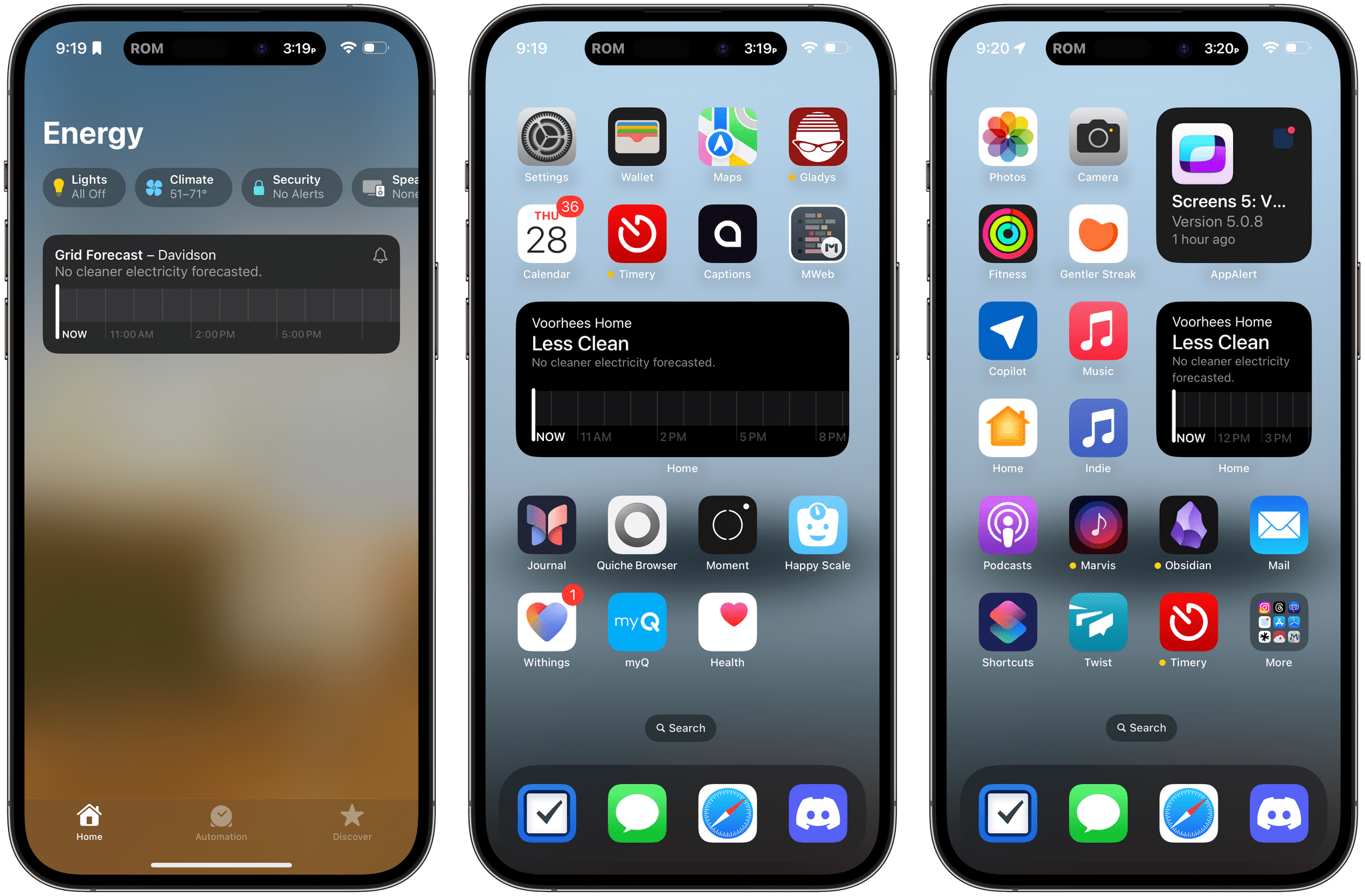Ever since Apple’s OSes were updated in the fall, I’ve been intrigued by the Home app’s new Clean Grid Forecast feature that predicts periods when the energy you use is ‘More Clean.’ The feature immediately reminded me of Clean Energy Charging, which works with Optimized Battery Charging, to charge your iPhone during periods when the electricity generated in your area is cleanest.
However, Clean Grid Forecast also raised more questions in my mind than it answered, like ‘What does More Clean mean?’ and ‘How does Apple know if the energy is cleaner?,’ and ‘How much cleaner is it anyway?’ These are the kind of answers that GridStatus.io, a website that offers electrical grid data, set out to answer by comparing Apple’s ‘More Clean’ periods with publicly available energy generation data.
It turns out that there’s not a lot of information about Apple’s Clean Grid Forecast. As GridStatus explains, what we know is that:
- It’s a forecast - this is important because a forecast is going to have some imperfections; and possibly change over time;
- It’s location-based, perhaps down to individual towns or counties;
- The forecast goes 12 hours out and seems to be in half-hour increments.
On the iPhone support page we learn one more piece of information, that the grid forecast is available in the contiguous U.S. only.
That didn’t give GridStatus a lot with which to work, and although they tried to validate Apple’s forecasts, the results were inconclusive:
without more info it’s hard to find evidence that what Apple’s doing here is little more than a novelty. Something for them to point to as “doing their part”, while providing no actionable information to verify or additional materials for their customers to learn from.
That’s not to say that the forecasts are incorrect. It’s just that Apple hasn’t shared enough information to judge the quality of its forecasts with any degree of certainty, which is disappointing.
With Clean Grid Forecast, Apple has an opportunity to extend its impact on energy consumption well beyond its products. Integrated with home automation, accurate forecasts could make it easier to schedule energy-intensive tasks during ‘More Clean’ periods. That’s not currently possible because the feature doesn’t extend beyond the Home app and its widgets. Sure, you can watch the forecast and defer tasks until you’re in a ‘More Clean’ zone, but a little automation would go a long way toward making task scheduling a reality.
The first step, though, is convincing consumers that deferring tasks is worth the trouble. One way Apple can do that is by sharing more information about how the Clean Grid Forecast works, providing some level of confidence that deferring tasks makes a difference. Next, Apple should integrate the forecasts directly into OS features and automation tools like Shortcuts, Siri, and home automation. Finally, I’d like to see Apple open up the forecasts to third parties so they can be integrated directly into hardware and software outside of Apple’s product lineup. That may strike some as unlikely, but with the company’s goal to be carbon neutral by 2030, it’s a chance for the company to have an impact well beyond its own products.
I realize that this is all easier said than done. At least in the US, energy production is a vast patchwork of local facilities, and there are many variables that affect whether energy is ‘More Clean’ than usual. However, by being transparent about how ‘More Clean’ is determined and offering tools that give consumers better control over when they consume power, Apple has an opportunity to empower people to take proactive steps to reduce carbon emissions and promote thoughtful decisions about power consumption on a massive scale. My hope is that Clean Power Forecasts is just the tip of the iceberg of what Apple has planned for managing energy usage in 2024.


